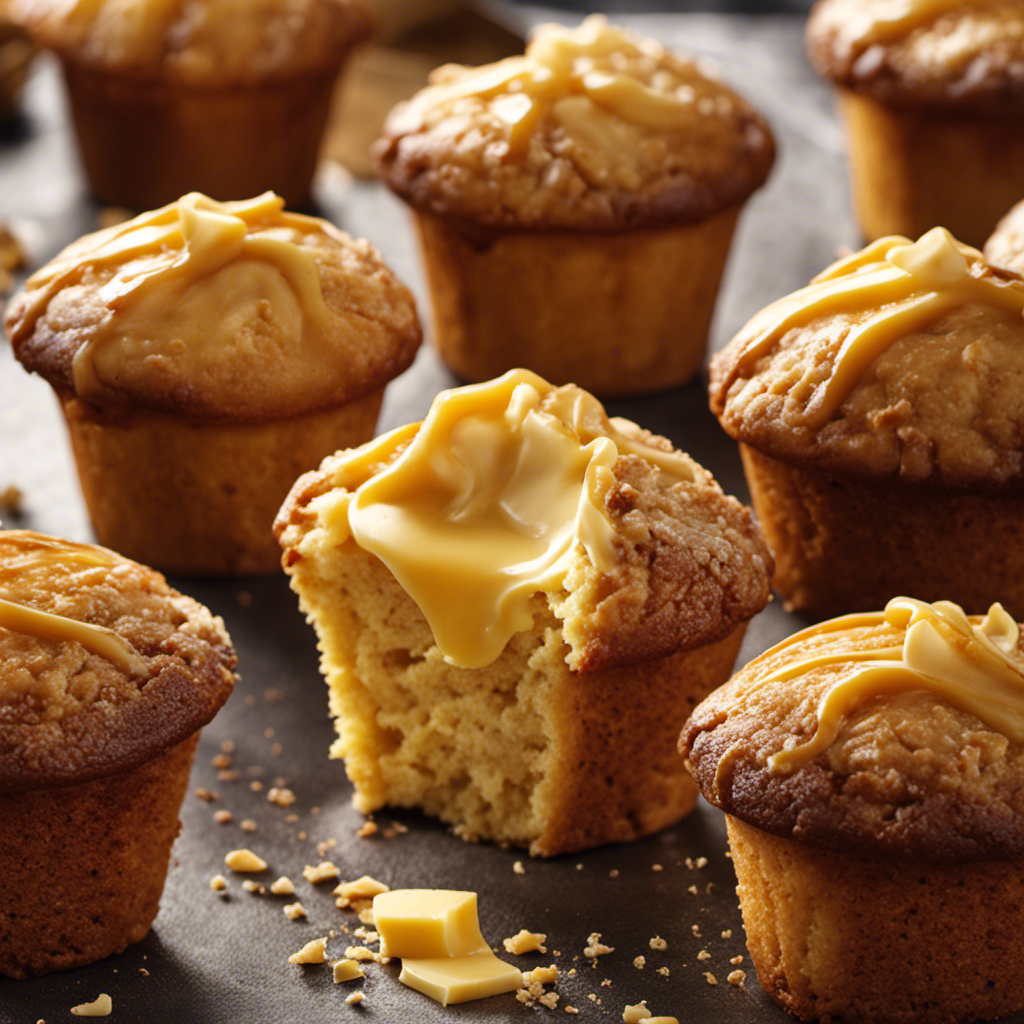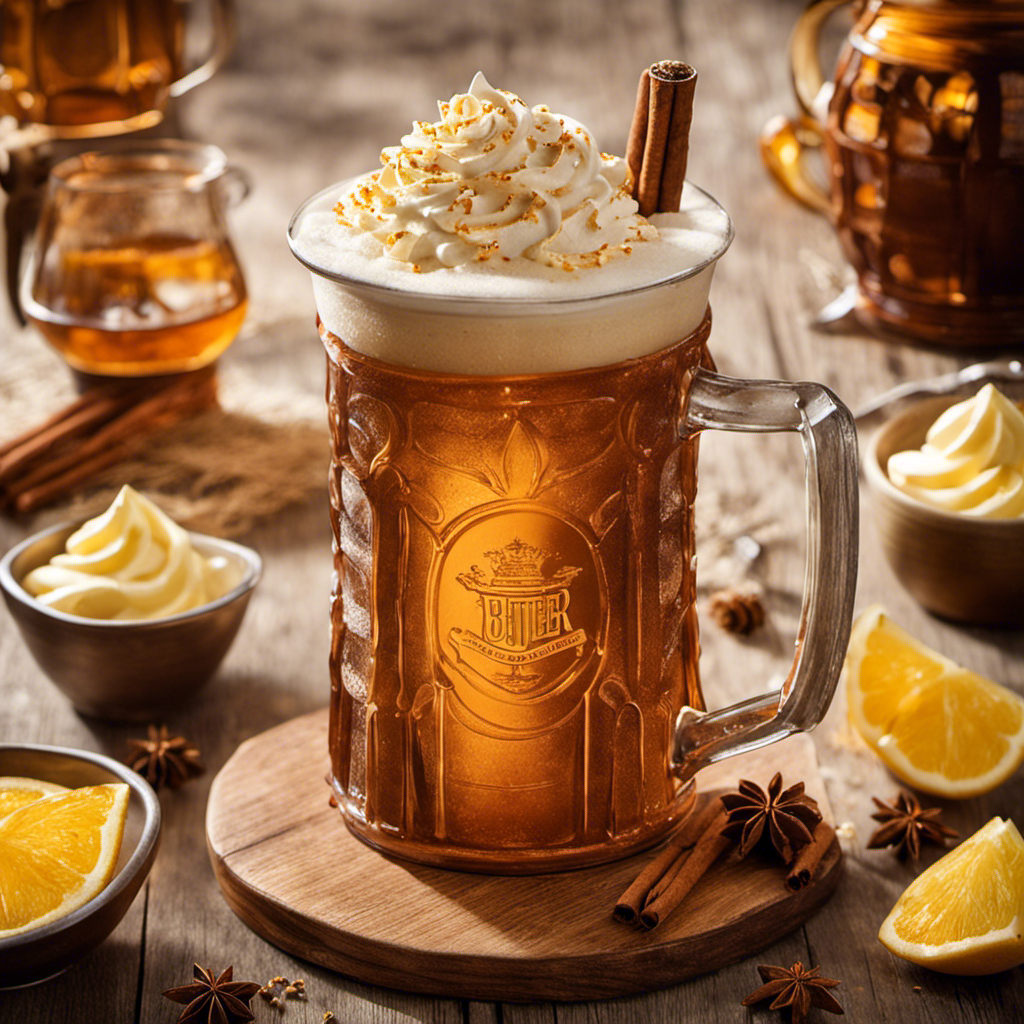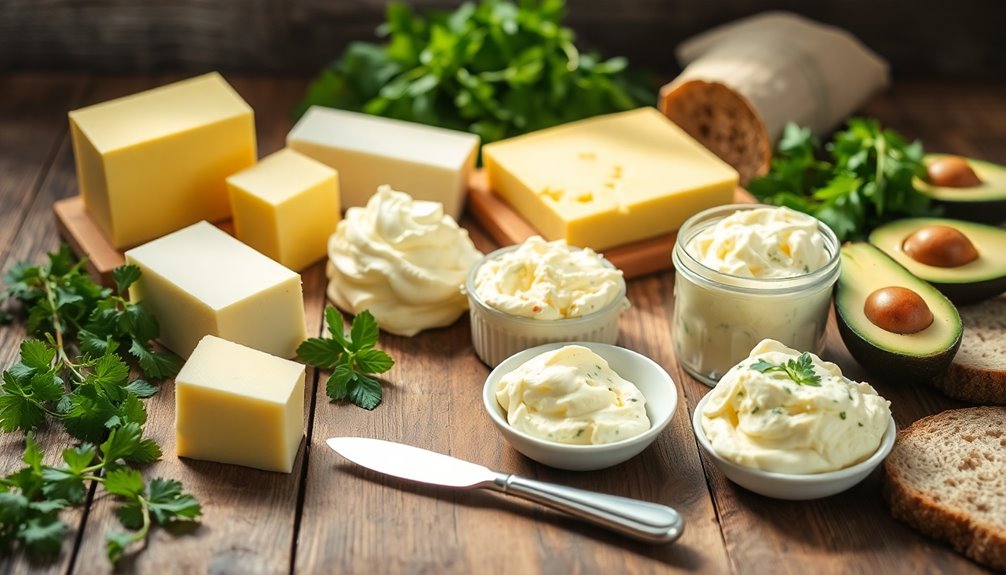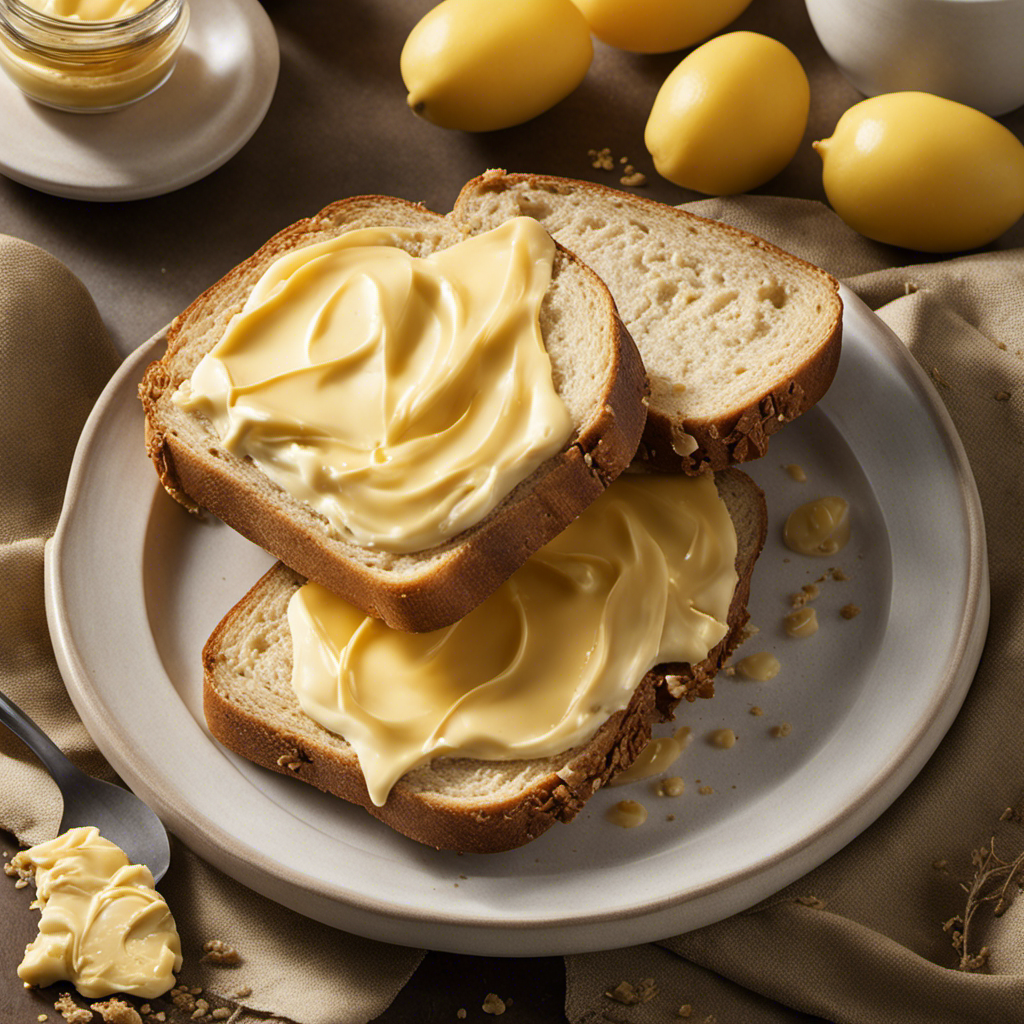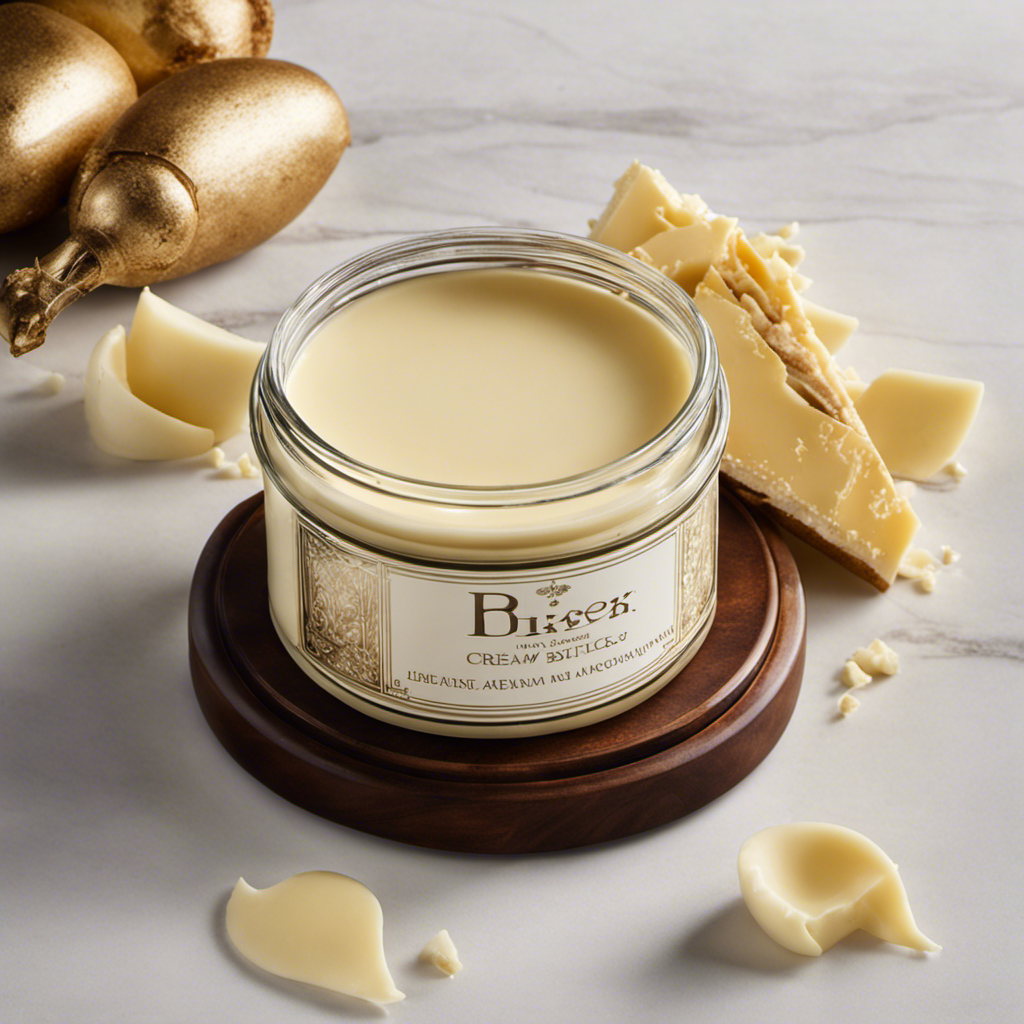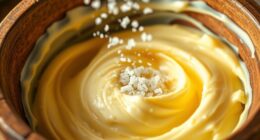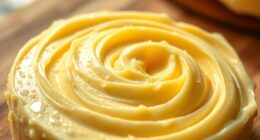Have you ever heard the phrase ‘butter your muffin’ and wondered what it means? Well, get ready, because I’m here to explain it to you.
In this article, we’ll dive deep into the origins, historical context, and cultural interpretations of this intriguing phrase. We’ll explore its figurative meanings, debunk misconceptions and urban legends, and examine its impact on language and idioms.
Get ready to be enlightened and join me on this fascinating journey of unraveling what it truly means to ‘butter your muffin.’
Key Takeaways
- The phrase "butter your muffin" originated in American English in the mid-20th century and its exact origin remains unclear.
- It evolved from referring to a preference for buttered muffins to implying sexual arousal or attraction.
- The phrase carries a hidden meaning, maintaining an innocent facade while conveying suggestive connotations.
- Cultural interpretations of the phrase vary, with American interpretation focusing on attractiveness, British interpretation emphasizing enjoyment, and French interpretation lacking a specific meaning.
Origins of the Phrase
Do you know where the phrase ‘butter your muffin’ originated from?
Let’s dive into a linguistic analysis to uncover its origins and regional variations.
The phrase ‘butter your muffin’ is a colloquial expression that refers to sexual innuendo, often used to describe someone’s attractiveness or desirability.
It is believed to have emerged in American English in the mid-20th century. However, the exact origin of the phrase remains unclear.
Linguists speculate that it may have derived from the association of butter being spread on a warm, delicious muffin, symbolizing pleasure and satisfaction.
Additionally, regional variations of this phrase can be found, such as ‘butter your bun’ or ‘butter your biscuit,’ which further illustrate the versatility of this metaphorical expression.
Now, let’s explore the historical context surrounding this intriguing phrase.
Historical Context
When examining the cultural significance of the phrase ‘butter your muffin,’ it becomes evident that it carries a playful and flirtatious connotation.
Originating from the early 20th century, this euphemism for sexual arousal has evolved over time to become a colloquial expression used to imply attraction or desire.
As language and societal norms have evolved, so too has the meaning and usage of this phrase, making it an intriguing subject for analysis and exploration.
Cultural Significance of Phrase
Have you ever wondered about the cultural significance of the phrase ‘butter your muffin’ and how it is used in different contexts? As a linguist, I find it fascinating to explore the cultural influences and linguistic significance behind such phrases.
Here are some insights into the cultural significance of the phrase:
-
Sexual innuendo: ‘Butter your muffin’ is often used as a euphemism for sexual arousal or stimulation, particularly in a playful or flirtatious context. It’s a lighthearted and cheeky way to discuss intimate matters.
-
Body positivity: The phrase also promotes body positivity and self-acceptance. By using the term ‘muffin’ to refer to the female genitalia, it emphasizes the natural beauty and uniqueness of every individual’s body.
-
Pop culture references: ‘Butter your muffin’ has been popularized in movies, TV shows, and music, further enhancing its cultural significance. It has become a recognizable phrase that adds humor and wit to various forms of entertainment.
-
Evolving language: The phrase reflects the ever-changing nature of language. It showcases how words and phrases can be adapted, repurposed, and imbued with new meanings over time.
Understanding the cultural influences and linguistic significance of phrases like ‘butter your muffin’ allows us to appreciate the rich tapestry of language and its capacity to reflect and shape our society.
Origins and Evolution
To better understand the origins and evolution of the phrase ‘butter your muffin,’ we can explore its historical usage and how it has changed over time.
This phrase has undergone evolutionary changes in its meaning and linguistic impact. Originally, ‘butter your muffin’ was a simple idiom referring to someone’s preference for buttered muffins. However, over time, it has taken on a more suggestive and innuendo-laden connotation, often used to imply sexual arousal or attraction.
The linguistic impact of this phrase lies in its ability to convey a hidden meaning while maintaining a seemingly innocent facade. It is interesting to observe how language evolves and adapts, reflecting societal norms and values.
Now, let’s delve into the cultural interpretations of this phrase and explore its significance in different contexts.
Cultural Interpretations
You might be surprised by the different cultural interpretations of what it means to ‘butter your muffin.’ This phrase, although seemingly innocent, can have various meanings across different cultures. Here are four cross-cultural perceptions of this phrase:
-
American Interpretation: In American culture, ‘butter your muffin’ is often used as a colloquial expression to describe someone’s attractiveness or desirability.
-
British Interpretation: In British culture, ‘butter your muffin’ is a playful way of saying that something is enjoyable or satisfying.
-
French Interpretation: In French culture, ‘butter your muffin’ is not a commonly used phrase and may not hold any specific meaning.
-
Japanese Interpretation: In Japanese culture, ‘butter your muffin’ would likely be seen as a literal phrase about applying butter to a muffin, without any additional connotations.
These interpretations highlight how cultural context and language can greatly influence the meaning and perception of a seemingly simple phrase.
Popularity and Usage
Origins and history, cultural references, misinterpretations, and controversies are all crucial aspects of understanding the popularity and usage of a particular phrase or expression.
Exploring the origins and history of a phrase provides insights into its evolution and how it has been used over time.
Cultural references shed light on the contexts in which the phrase is commonly used and the meanings it holds within different communities.
Additionally, misinterpretations and controversies surrounding a phrase reveal the potential for misunderstandings and the debates that can arise.
Origins and History
Butterin’ your muffin may have different origins and meanings throughout history. Understanding the linguistic analysis and social implications of this phrase can provide valuable insights into its evolution.
Here are four key points to consider:
-
Historical roots: The phrase ‘butter your muffin’ can be traced back to the early 20th century when ‘butter’ was used as a metaphor for adding excitement or pleasure. ‘Muffin’ referred to a woman’s intimate area, making it a euphemism for sexual satisfaction.
-
Double entendre: The phrase gained popularity due to its playful and suggestive nature. It became a way to talk about sexual desire without being too explicit, allowing for innuendo and humor.
-
Gender dynamics: The phrase primarily targets women, objectifying them and reducing their sexual pleasure to a mere metaphor. This reflects the societal norms and attitudes towards female sexuality during different time periods.
-
Evolution in modern times: Today, the phrase has lost some of its original sexual connotations and is often used in a more lighthearted and innocent manner. However, it is important to recognize its historical context and consider the potential impact it may have on individuals.
Understanding the origins and implications of ‘butter your muffin’ provides a foundation for exploring its cultural references and how it has been used in popular culture.
Cultural References
When it comes to cultural references, it’s fascinating to see how the phrase ‘butter your muffin’ has been incorporated into various forms of media and entertainment. This linguistic phenomenon holds significant meaning and has sparked cross-cultural interpretations. Let’s delve deeper into the world of cultural references and explore the implications of this phrase.
In order to understand the cultural significance of ‘butter your muffin’, let’s examine the following table:
| Cultural Interpretation | Media Example | Meaning |
|---|---|---|
| Flirtatious | Romantic comedy movies | Expressing attraction |
| Culinary | Cooking shows | Enhancing flavor |
| Confidence booster | Self-help books | Encouraging self-assurance |
This table showcases the versatility of the phrase and how it can be interpreted differently across various cultural contexts. From flirtation to culinary references, ‘butter your muffin’ has become a phrase with multidimensional meanings.
These cross-cultural interpretations highlight the impact of language on our everyday lives. However, with popularity comes misinterpretations and controversies. Let’s explore these further in the next section.
Misinterpretations and Controversies
Now, let’s delve into some of the misinterpretations and controversies surrounding the phrase ‘butter your muffin’ and explore how they have shaped its perception in different communities.
-
Misunderstood Intentions: The phrase ‘butter your muffin’ is often misunderstood as a crude and sexual innuendo, when in reality, it has no such connotation. This misinterpretation has led to a negative perception of the phrase and created unnecessary controversy.
-
Social Media Controversies: In the age of social media, any phrase can quickly become viral, and ‘butter your muffin’ is no exception. It has been subject to numerous controversies, with people misrepresenting its meaning and intent, leading to heated debates and misunderstandings.
-
Stereotyping and Cultural Differences: The controversies surrounding ‘butter your muffin’ have highlighted the differences in cultural norms and sensitivities. What may be seen as harmless in one culture can be offensive in another, further fueling the misunderstandings and controversies.
-
Impact on Perception: These misunderstandings and controversies have significantly shaped the perception of ‘butter your muffin’ in different communities. It is now seen as a controversial and potentially offensive phrase rather than a harmless expression.
With the understanding of the misinterpretations and controversies surrounding ‘butter your muffin’, let’s now explore its figurative meanings.
Figurative Meanings
You might be wondering what the figurative meanings of ‘butter your muffin’ are. Common misconceptions often arise when it comes to understanding figurative language usage.
In the case of ‘butter your muffin,’ it is important to note that this phrase is not commonly used in everyday conversation. However, it does have a metaphorical connotation.
When someone says ‘butter your muffin,’ they are usually referring to something that brings pleasure or enjoyment. It is a playful way of expressing attraction or desire.
It is crucial to interpret figurative expressions in their intended context to avoid misinterpretations. Language, especially figurative language, is dynamic and ever-evolving, and understanding its nuances can enhance our communication skills.
Misconceptions and Urban Legends
If you believe everything you hear, you might fall victim to misconceptions and urban legends. In the realm of common misconceptions and the spread of urban legends, it is important to approach information with a critical mindset.
Here are four key points to consider:
-
Misconceptions can be widespread: False information can easily circulate, leading to the acceptance of inaccurate beliefs. It is crucial to fact-check and verify sources before accepting information as true.
-
Urban legends thrive on storytelling: These narratives often capture our imagination and spread through word of mouth or online platforms. However, they are often based on exaggerations or falsehoods.
-
The power of social media: With the advent of social media, urban legends can spread rapidly, reaching a wide audience within seconds. It is important to be cautious and evaluate the credibility of sources before sharing information.
-
The role of critical thinking: By questioning and analyzing information, we can separate fact from fiction and avoid falling prey to common misconceptions and urban legends.
Impact on Language and Idioms
The impact of urban legends on language and idioms can be seen in the way certain phrases and expressions are influenced by these popular narratives. Urban legends have the power to shape and evolve language over time, impacting the way we communicate and understand each other. Language evolution occurs as new words and phrases are introduced into our vocabulary, and urban legends play a significant role in this process. They can give rise to new idioms, expressions, and even slang terms that become integrated into our everyday speech. This evolution of language is crucial for effective communication, as it helps us connect and relate to one another. Urban legends, with their captivating narratives and widespread appeal, have the potential to leave a lasting impact on our language and the way we express ourselves.
| Emotion | Explanation |
|---|---|
| Curiosity | Urban legends spark curiosity and intrigue, driving us to seek out more information and engage in discussions. |
| Fascination | These stories captivate our imagination and generate a sense of wonder, making us eager to learn more about them. |
| Surprise | Urban legends often contain unexpected twists and turns, surprising us with their unexpected endings or revelations. |
| Amusement | These tales can be humorous and entertaining, providing us with amusement and serving as topics of lighthearted conversations. |
Modern Relevance and Evolution
Urban legends continue to shape and evolve our language, influencing the way we communicate and understand each other in modern times. This is particularly evident in the modern interpretations and linguistic evolution of phrases and idioms.
One such example is the phrase ‘butter your muffin,’ which has gained popularity and taken on new meanings in recent years. Here are four ways in which this phrase has evolved and reflects the changing nature of language:
-
Double entendre: ‘Butter your muffin’ can now be used as a playful and risqué way to express attraction or arousal.
-
Culinary metaphor: The phrase has also taken on a literal meaning, referring to the act of spreading butter on a muffin.
-
Empowerment: Some individuals interpret the phrase as a metaphor for self-care and self-love, encouraging personal growth and happiness.
-
Pop culture references: ‘Buttering your muffin’ has been used in various movies, TV shows, and songs, further solidifying its place in modern language.
The evolution of phrases like ‘butter your muffin’ showcases the dynamic nature of language and how it adapts to reflect contemporary interpretations and societal changes.
Frequently Asked Questions
Is "Butter Your Muffin" a Phrase That Is Commonly Used in Everyday Conversations?
Yes, "butter your muffin" is a commonly used phrase in everyday conversations. It originated in the late 20th century, and its cultural significance lies in its playful and flirtatious connotations.
Are There Any Specific Regions or Communities Where the Phrase "Butter Your Muffin" Is More Commonly Used?
In certain regions or communities, food-related phrases like "butter your muffin" may hold cultural significance. These expressions evolve over time, reflecting the unique culinary traditions and linguistic nuances of different areas.
Has the Phrase "Butter Your Muffin" Ever Been Used in a Derogatory or Offensive Manner?
Based on my knowledge, the phrase "butter your muffin" can be considered sexually suggestive or inappropriate. However, its interpretation can vary depending on the context in which it is used.
Are There Any Alternative Phrases or Expressions That Have Similar Meanings to "Butter Your Muffin"?
There are several alternative phrases that convey a similar meaning to "butter your muffin." These include "tickles your fancy," "floats your boat," and "gets your motor running." The cultural significance of such expressions lies in their playful and suggestive nature.
Has the Phrase "Butter Your Muffin" Been Referenced or Used in Popular Culture, Such as in Movies, TV Shows, or Songs?
The phrase ‘butter your muffin’ has been referenced and used in popular culture, including movies, TV shows, and songs. Its origins and history in popular culture are diverse, and its usage can vary in different contexts.
Conclusion
In conclusion, the phrase ‘butter your muffin’ has a rich history and cultural significance. Its origins can be traced back to early English idioms, where ‘butter’ was used as a metaphor for enhancing or improving something.
Over time, the phrase has evolved to encompass a more figurative meaning, often associated with sexual innuendos. Despite misconceptions and urban legends surrounding its true meaning, ‘butter your muffin’ remains a popular and widely used phrase in modern language.
It serves as a testament to the ever-evolving nature of language and the power of figurative expressions to convey complex ideas. Just as butter brings flavor and richness to a muffin, this phrase adds depth and nuance to our conversations.
